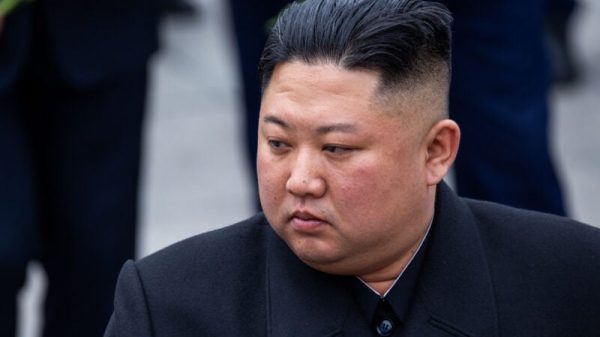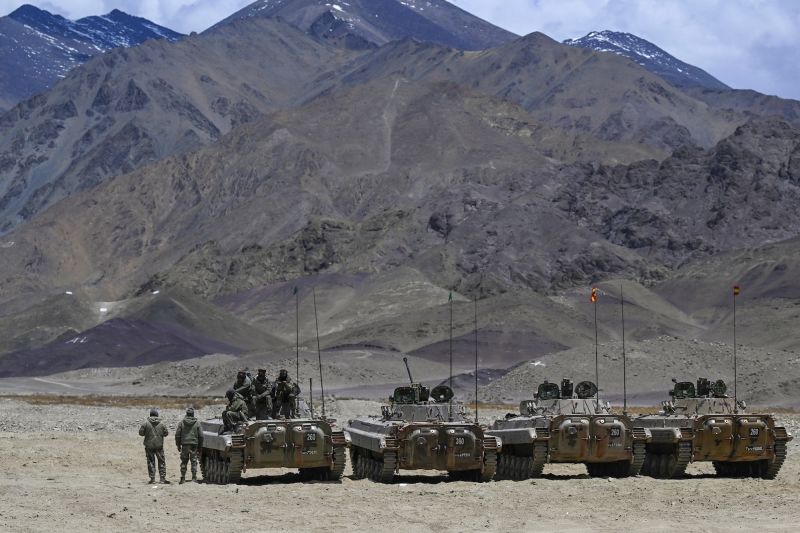China and India agreed on Wednesday to work on easing their long-running border dispute, as the two Asian giants resumed a formal high-level dialogue for the first time in five years.
Chinese Foreign Minister Wang Yi and India’s National Security Adviser Ajit Doval met in Beijing on Wednesday, the first time they held formal talks as their countries’ special representatives on border issues since late 2019.
The meeting follows an agreement the two countries reached in October on military disengagement and patrolling arrangements along parts of their contested border, where the two nuclear-armed rivals have engaged in a tense standoff since a deadly clash in 2020.
A statement from China’s Foreign Ministry said Wang and Doval reaffirmed their commitment to seek a package of solutions to the border dispute that were “fair, reasonable and acceptable to both sides.”
They vowed to continue to implement the disengagement agreement and emphasized that the dispute should be handled properly, to “avoid impacting the development of bilateral ties.”
“Both sides agreed to continue taking measures to maintain peace and tranquility in the border areas and to promote the healthy and stable development of bilateral relations,” the Chinese statement said.
The two officials also agreed to strengthen cross-border exchanges, including the resumption of trips by Indian pilgrims to Tibet, cross-border river cooperation and border trade at Nathula, a mountain pass in the Indian state of Sikkim, according to the statement.
A statement from India’s Foreign Ministry confirmed the broad details of the meeting, adding that the ministers “emphasised the need to ensure peaceful conditions on the ground so that issues on the border do not hold back the normal development of bilateral relations.”
“Drawing on the learnings from the events of 2020, they discussed various measures to maintain peace and tranquility on the border and advance effective border management,” the Indian statement added.
The latest effort to ease tensions between the two neighbors comes amid China’s diplomatic charm offensive to mend ties with several American allies and partners, including Japan and Australia, in the lead-up to US President-elect Donald Trump’s return to the White House.
Ties between China and India have been strained severely since June 2020, when a bloody hand-to-hand battle in the Galwan Valley killed at least 20 Indian and four Chinese soldiers.
Both India and China maintain a significant military presence along their 2,100-mile (3,379-kilometer) de facto border, known as the Line of Actual Control (LAC), which has never been clearly defined and has remained a source of friction since a bloody war between the two countries in 1962.
The clash four years ago along the disputed border between Indian Ladakh and Chinese-controlled Aksai Chin caused the conflict’s first known fatalities in more than four decades.
Since then, the two sides have held rounds of border talks to defuse tensions, but friction points have remained, including in areas that both sides previously patrolled but which have since become so-called buffer zones.
The border patrol agreement reached in October is seen by experts as a positive development. It was struck just days before Chinese leader Xi Jinping and Indian Prime Minister Narendra Modi met in Kazan, Russia, on the sidelines of a BRICS summit.
During their meeting on Wednesday, Wang told Doval that the “hard-won” resumption of their dialogue was a “timely and powerful measure” to implement the consensus reached by Xi and Modi in October.
“The two leaders of the two countries emphasized viewing China-India relations from a strategic and long-term perspective. At a critical moment, they recalibrated the course and clarified the direction for the recovery and development of China-India relations,” Wang was quoted as saying in a separate statement from the Chinese Foreign Ministry.


























